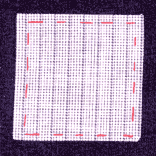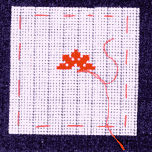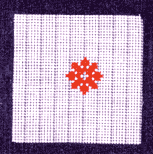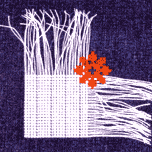So you thought you need needs aida or evenweave fabric to cross stitch? Think again! Waste canvas is a nifty little helper to have in your embroidery stash – it allows you to add cross stitch to absolutely any fabric, from T-shirts to bedding.
Here's a step-by-step guide to working with it:





